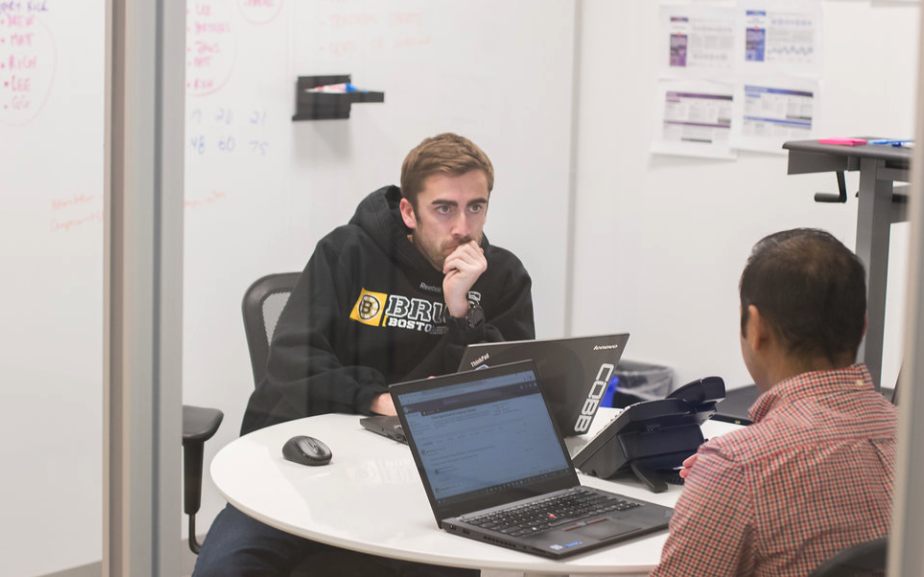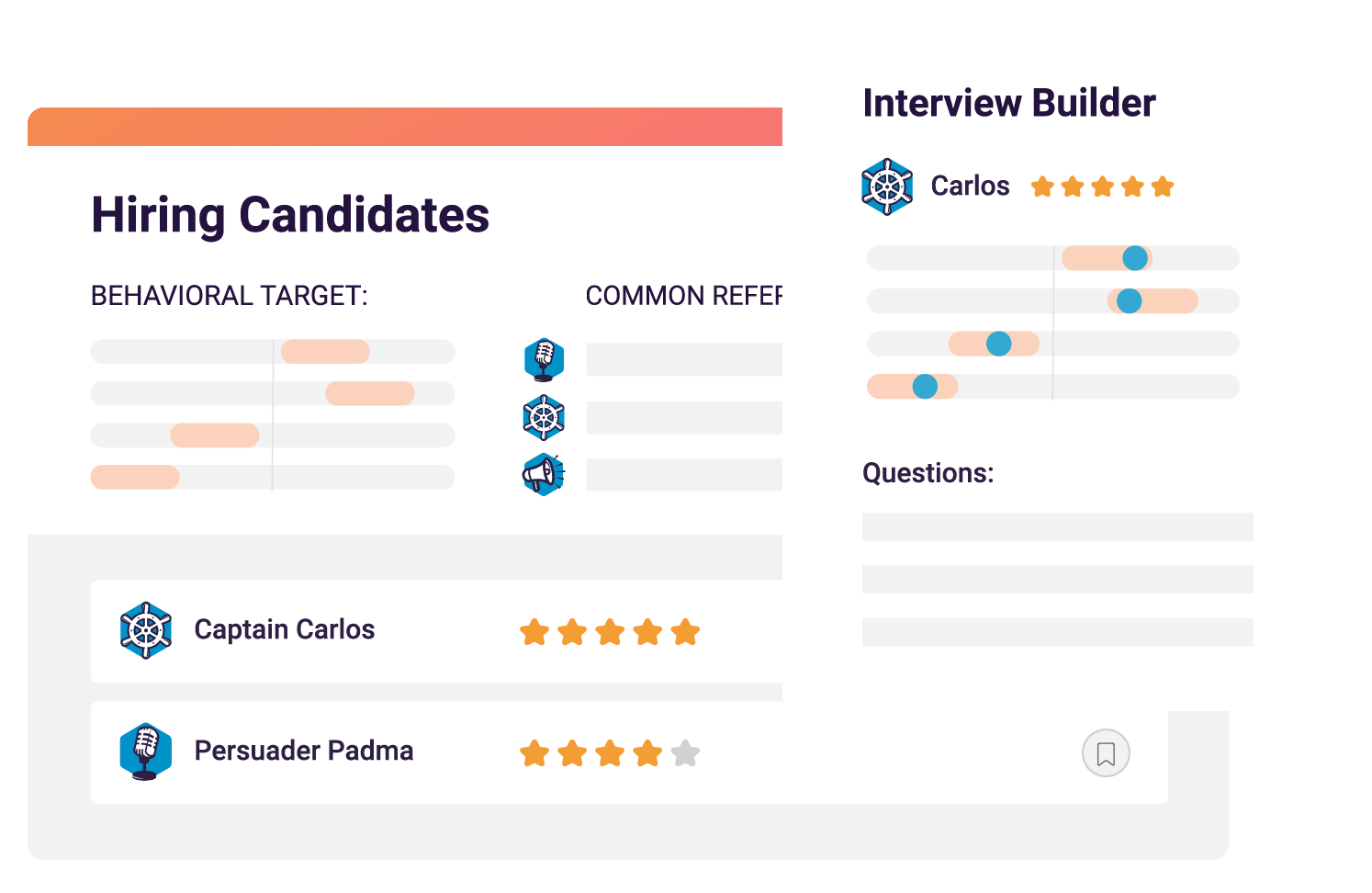A stay interview is a proactive conversation with your existing employee(s), aimed at uncovering what workplace factors keep them engaged, and which kinds of developments might tempt them to leave.
Unlike exit interviews, which occur too late in the employee’s tenure to make a difference, employers conduct stay interviews to address any concerns and reinforce positive experiences while the employee is still onboard.
Below, we’ll explore what a stay interview is, when to conduct one, the benefits and challenges involved, and how to prepare and perform them effectively. We’ll provide you with sample questions and a template to help you conduct your own.
What is a stay interview?
A stay interview is a strategic tool organizations use to understand what drives an employee’s ongoing commitment and satisfaction. The focus is on learning what the organization is doing well, and identifying potential improvements that could enhance employee experience and career development.
Typically led by the employee’s direct manager, stay interviews are most effective when conducted semi-regularly with key team members. The goal is to foster open dialogue, uncover hidden frustrations, and proactively shape a work environment that encourages retention.
By understanding what motivates their top talent, leaders can tailor their strategies to keep these employees thriving.
Empower the Managers at your Organization
Explore how PI Perform uncovers behavioral insights to help managers prep, communicate, coordinate, and lead their teams.
How it differs from other interviews
Stay interviews stand out from other interviews thanks to their proactive and preventative nature. This early intervention allows employers to take initiative and resolve issues before they become reasons for departure.
The goal is to understand what motivates the employee, what might drive them away, and what the organization can do to improve their work life. Unlike performance reviews, stay interviews instead concentrate on the employee’s overall experience and satisfaction within the company.
By clearly distinguishing stay interviews from these other conversations, organizations can foster a more focused and effective dialogue aimed at long-term retention and engagement.
When to conduct a stay interview
Choosing the right time to conduct stay interviews is essential for gathering meaningful feedback. Here are a few key scenarios to consider:
- After the first 90 days: Conducting a one-on-one stay interview early in an employee’s tenure can help assess their initial experience and address any concerns before they escalate, setting the stage for long-term engagement. Consider it part of your extended onboarding process.
- Annually or biannually: Regular interviews provide ongoing insights into employee satisfaction, and allow for timely adjustments to retention strategies, keeping employees motivated and aligned with company goals.
- During high employee-turnover periods: If your organization is experiencing high employee turnover, focusing on loyal employees can reveal what’s working well and offer clues on how to retain others, helping to stabilize the workforce.
- When facing market competition: If recruiters target a senior or high-performing employee, a stay interview can reinforce their value to the organization, and address any factors that might tempt them to leave.
When employees start exploring new opportunities, a stay interview is a crucial retention strategy that identifies and addresses their needs. The best candidates for stay interviews are long-term, high-performing employees who are vital to the organization’s success in their current role.
Benefits of a stay interview
Effective stay interviews offer several benefits that can significantly impact employee retention and organizational health. By addressing potential challenges early, these interviews help prevent issues from escalating into serious problems, making them a proactive tool in any retention strategy.
Stay interviews allow organizations to identify and address employee concerns before they become reasons for departure, which is far more cost-effective than recruiting and training new hires. Additionally, stay interviews provide valuable insights into how to improve the organization’s environment and culture.
By uncovering opportunities for enhancement, employers can create a more supportive and engaging workplace, leading to greater job satisfaction and employee engagement.
Challenges of a stay interview
Effective stay interviews, while beneficial, come with their own set of challenges:
- Difficult conversations: Current employees might feel uncomfortable discussing sensitive topics like company culture or job satisfaction directly with their manager, which could put them in a tough spot.
- Intimidation: Both employees and managers may find the process intimidating. Direct reports might fear repercussions from their feedback, while managers may feel pressured to act quickly.
- Follow-through: Gathering feedback is just the beginning. Addressing issues and developing an action plan takes time, effort, and resources, making it challenging to ensure that the feedback ultimately leads to meaningful change.
By being aware of these challenges, organizations can better prepare for stay interviews and turn them into an effective tool for retention and engagement. Using behavioral data to prepare for and guide the conversation, just as you might with a 1:1, can help mute some of these fears.

Preparing for a stay interview
To maximize the effectiveness of stay interviews, organizations need to follow best practices that encourage open communication, psychological safety, and actionable feedback among each employee. Below are vital guidelines that’ll help you conduct productive and insightful interviews.
Notify the employee in advance.
Inform the interviewee beforehand to set expectations and reduce any potential anxiety about the nature of the conversation–it’s just a check-in.
Schedule the interview.
Plan and confirm the interview in advance. This ensures both parties are available and ready, avoiding last-minute scheduling conflicts or distractions.
Set a clear time limit.
Determine an appropriate length, such as 30, 45, or 60 minutes. Make sure you have enough time. If more is needed, consider scheduling a follow-up.
Create a comfortable environment.
Choose a neutral location for in-person interviews. If the interview is virtual, ensure the setting is relaxed and free from distractions.
Keep questions consistent.
Ask open-ended questions. Use a standard set of questions to maintain consistency and fairness across interviews—this will improve the quality of your collected data. Avoid leading questions that could elicit biased responses.
Focus on engagement, not performance.
Stay interviews are about improving the employee’s experience, not assessing their job performance. Keep the tone positive and supportive.
Conducting a stay interview: best practices
Make sure the conversation you have with the employee is meaningful and productive when conducting a stay interview. The following guidelines will help you create a supportive environment, gather valuable insights, and demonstrate that the employee’s feedback is valued.
Communication
Clear, open dialogue builds trust and encourages honest feedback. To ensure the conversation stays focused and constructive, articulate your questions clearly, listen attentively, and respond thoughtfully.
Psychological safety
Employees must feel secure sharing their true thoughts without fear of negative consequences. Establish a respectful and nonjudgmental atmosphere, and if an employee hesitates to answer a question, acknowledge their discomfort and encourage them gently without pressing too hard.
Active listening
Give the employee your full attention, avoid interruptions, and validate their input. This approach fosters trust and ensures that you capture the nuances of their feedback, which is critical for effective follow-up.
Be action-oriented.
As you gather feedback, listen for areas of improvement and work collaboratively to develop solutions. Demonstrating that you’re committed to taking action based on their input reinforces the value of the stay interview and builds trust.
Say thank you.
Always express gratitude. Thank the employee for their time and feedback, emphasizing that their insights are valued. This simple gesture strengthens the relationship and encourages ongoing engagement.
Sample stay interview questions
As you can imagine, asking the right questions during a stay interview is vital to understanding what drives employee satisfaction and retention. Below are some sample questions intended to cover various aspects of the employee’s experience.
Work-life balance
- How do you feel about your current work-life balance?
- Can any changes help you better manage your work and personal life?
Work environment and culture
- How would you describe the work environment here?
- What aspects of our company culture do you appreciate most, and what could be improved?
Recognition
- Do you feel recognized for your contributions at work?
- How can we better acknowledge your efforts and achievements?
Job satisfaction
- What do you enjoy most about your job?
- Are there any aspects of your role that you need help with?
Professional development
- Do you have opportunities to grow and develop here?
- Have we provided enough development opportunities?
- What skills or experiences would you like to gain in the next year?
Communication and collaboration
- How well do you feel informed about what’s happening at the company?
- Are there any barriers to effective communication or collaboration within your team?
- Do we value employee feedback?
Sample stay interview template
This template provides a structured outline to guide your stay interviews, ensuring consistency and effectiveness across all discussions.
Introduction
Begin by thanking the employee for their time. Explain that the purpose of the interview is to learn what’s working well for them and identify areas for improvement.
Core questions
Refer to the previously listed questions, covering topics like work-life balance, job satisfaction, professional development, and communication. Tailor these questions to fit the employee’s specific role and experience.
Feedback and discussion
Encourage the employee to expand on their answers. Ask follow-up questions to dig deeper into their responses and uncover valuable insights.
Action plan
Summarize the key points discussed and collaborate on a potential action plan with the employee. This reinforces that their feedback will lead to meaningful changes.
Closing
Conclude by thanking the employee again, emphasizing how important their input is. Assure them that their feedback will be used to create a better work environment.
How The Predictive Index can help
We know that retaining top talent is crucial to your organization’s success. That’s why our platform provides the necessary tools for any organization to conduct meaningful stay interviews, uncover what matters most to your employees, and take proactive steps to keep them engaged.
Using our data-driven insights, you can tailor your strategies to meet the needs of your workforce, reducing turnover and fostering a more committed, satisfied team.
Ready to see how PI can enhance your employee retention strategy? Schedule a demo today, and discover how our solutions can help you build a stronger, more engaged organization.








